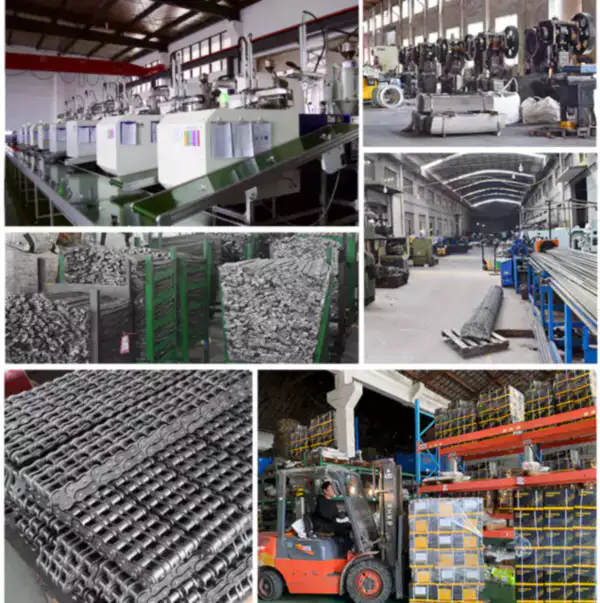Introduction
Energy efficiency is a crucial aspect of industrial operations, and gripper chain systems play a vital role in various industries. This article will discuss the process of conducting an energy efficiency assessment specifically for gripper chain systems. By following these guidelines, businesses can optimize their energy usage and improve overall efficiency.
Understanding Gripper Chain Systems
Gripper chain systems are mechanical devices used in industrial settings to transport, grip, and manipulate objects. These systems consist of chains, grippers, and other components that work cohesively to facilitate smooth material handling processes. To ensure maximum performance and energy efficiency, it is important to assess and optimize the operation of gripper chain systems.
Benefits of Energy Efficiency Assessment
1. Enhanced Productivity: Through an energy efficiency assessment, businesses can identify areas of improvement in their gripper chain systems, leading to increased productivity and streamlined operations.
2. Cost Savings: Optimizing energy efficiency can significantly reduce energy consumption and operational costs, allowing businesses to allocate resources more effectively.
3. Environmental Sustainability: By reducing energy consumption, businesses contribute to a greener environment and demonstrate their commitment to sustainable practices.
4. Equipment Longevity: Energy-efficient gripper chain systems experience less wear and tear, resulting in extended equipment lifespan and reduced maintenance costs.
5. Compliance with Regulations: Many industries have stringent energy regulations, and conducting an energy efficiency assessment ensures compliance with these requirements.
Steps for Conducting an Energy Efficiency Assessment
1. System Inspection
The first step in the assessment process is a thorough inspection of the gripper chain system. This includes examining the chains, grippers, sprockets, bearings, and other related components. Any signs of damage or wear should be noted for further evaluation.

2. Data Collection
Data collection is crucial for accurately assessing energy efficiency. Measurements such as power consumption, motor load, and operating time should be recorded. This data will serve as a benchmark for evaluating the system's performance and identifying areas for improvement.
3. Performance Analysis
Using the collected data, a comprehensive performance analysis should be conducted. This involves comparing the system's actual performance with its expected performance and identifying any deviations. Factors contributing to energy inefficiency, such as friction, misalignment, or improper tension, should be thoroughly examined.

4. Optimization Strategies
Based on the performance analysis, optimization strategies can be implemented. These may include adjusting chain tension, lubrication, replacing worn-out components, or upgrading to energy-efficient alternatives. Implementing these strategies will help maximize energy efficiency and overall system performance.
5. Monitoring and Maintenance
Regular monitoring and maintenance are essential to sustain energy efficiency in gripper chain systems. Establishing a maintenance schedule, including lubrication, inspection, and component replacements, will ensure continued optimal performance and extend equipment lifespan.
Gripper Chains Purchasing Guide
| Aspect | Considerations |
|---|---|
| Load Capacity | Ensure the gripper chains can handle the expected load without compromising efficiency or safety. |
| Material | Choose gripper chains made from durable and wear-resistant materials suitable for the specific application. |
| Design | Select gripper chains with a design that optimizes gripping efficiency and minimizes slippage. |
| Compatibility | Ensure the gripper chains are compatible with existing equipment and components. |
| Cost | Consider the overall cost-effectiveness of the gripper chains, including initial purchase cost and maintenance expenses. |
Sprockets for Gripper Chains
Gripper chains and sprockets are integral components that work hand in hand. Sprockets provide the necessary teeth for gripper chains to engage, ensuring smooth and efficient operation. The correct selection and use of sprockets are vital for optimal gripper chain performance.
At our company, we understand the importance of sprockets for gripper chains. We offer a wide range of sprockets designed to complement various gripper chain systems. Our sprockets are made from high-quality materials, ensuring durability and long-lasting performance.

Our Advantages
- 1. Superior Quality: Our gripper chains are manufactured using state-of-the-art technology and adhere to strict quality control standards.
- 2. Customization Options: We offer customization services to meet specific customer requirements, ensuring the perfect fit for any application.
- 3. Competitive Pricing: Despite our high-quality products, we offer competitive pricing to provide excellent value for our customers.
- 4. Extensive Experience: With years of experience in the industry, we have garnered expertise and knowledge to deliver top-notch gripper chain solutions.
- 5. Excellent Customer Support: Our dedicated customer support team is always ready to assist clients with any inquiries or concerns, providing exceptional service throughout the purchasing process.

Q&A: Gripper Chains
Q: What is the recommended maintenance schedule for gripper chains?
A: The maintenance schedule for gripper chains depends on various factors, including usage intensity and environmental conditions. However, a general guideline is to inspect and lubricate the chains regularly, typically every 1-3 months.
Q: Can gripper chains be used in high-temperature environments?
A: Yes, gripper chains can be designed and manufactured to withstand high-temperature environments. It is crucial to select the appropriate materials and lubrication methods to ensure optimal performance and longevity in such conditions.
Q: How do I determine the correct gripper chain size for my application?
A: The selection of the gripper chain size depends on factors such as load capacity, speed, and environmental conditions. It is recommended to consult with industry experts or refer to gripper chain manufacturers' guidelines to ensure the appropriate chain size for your specific application.
Edited by Zqq.
